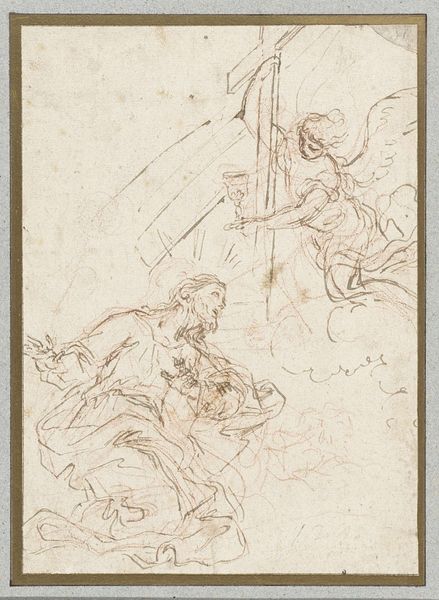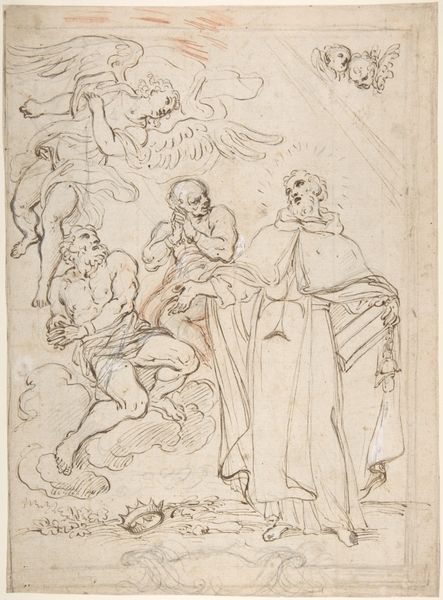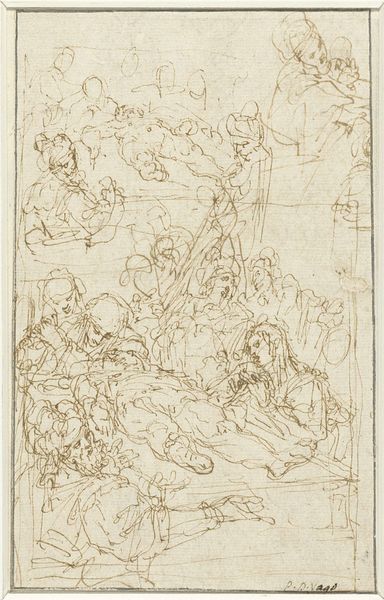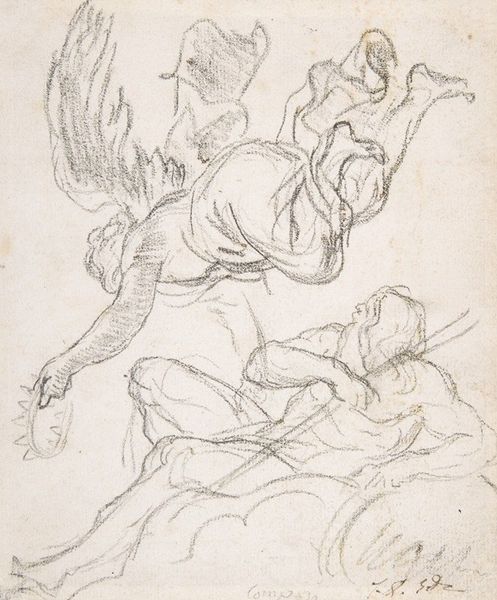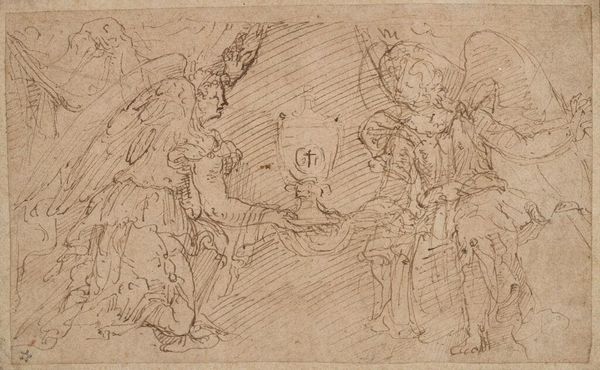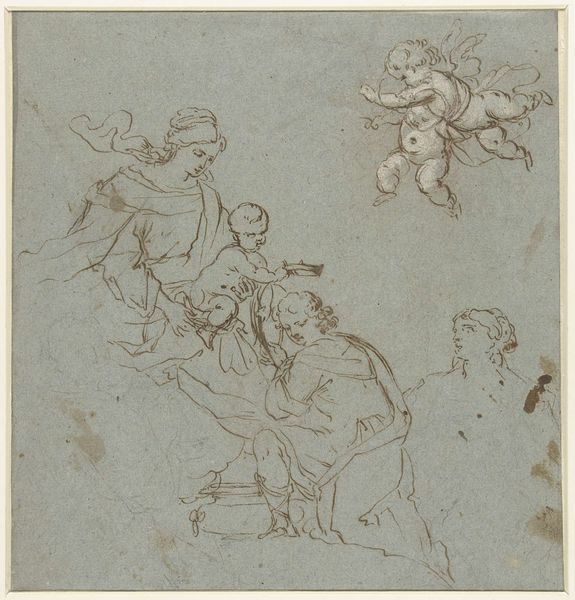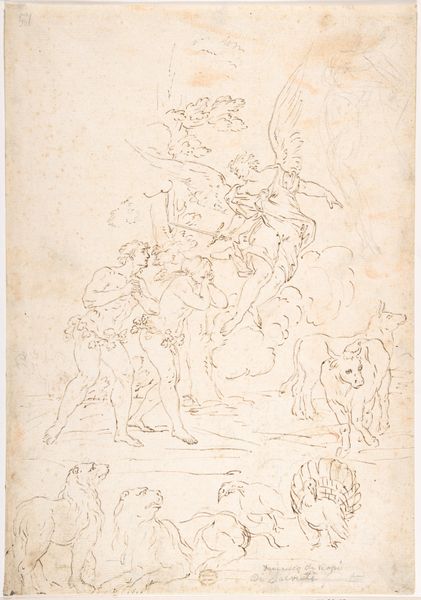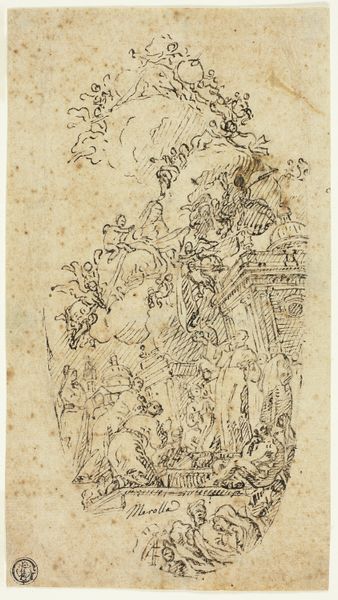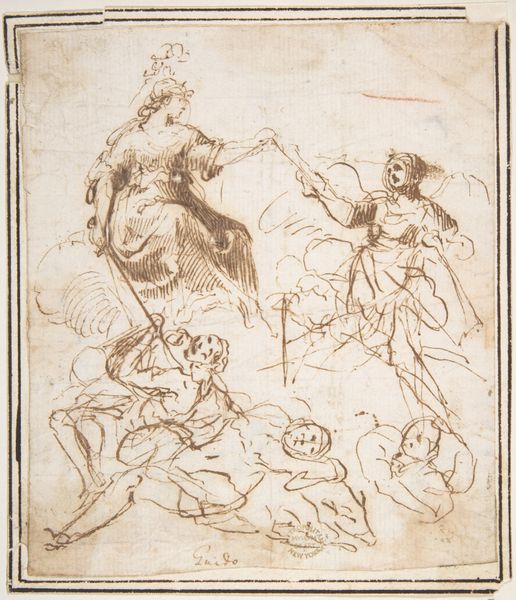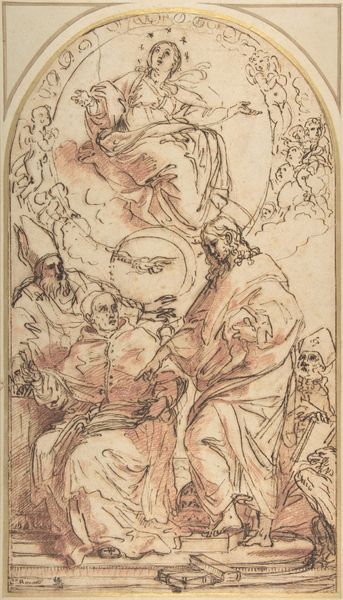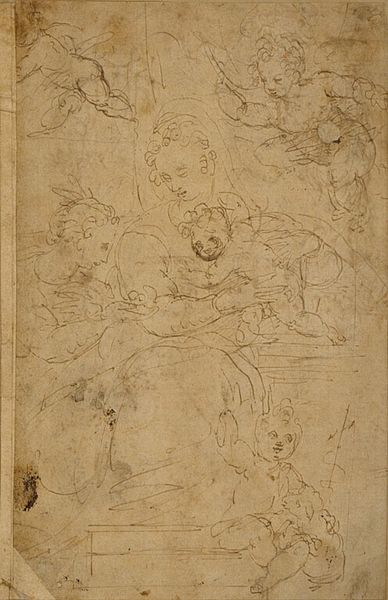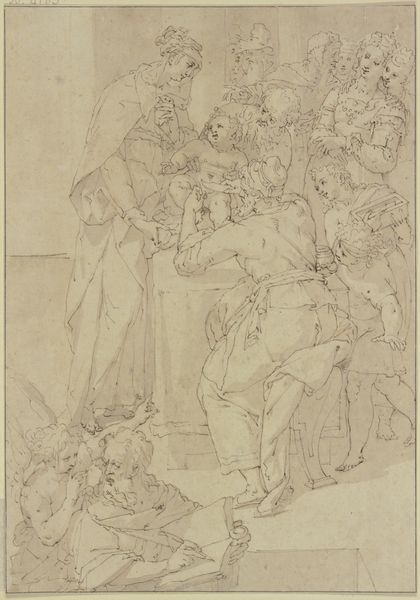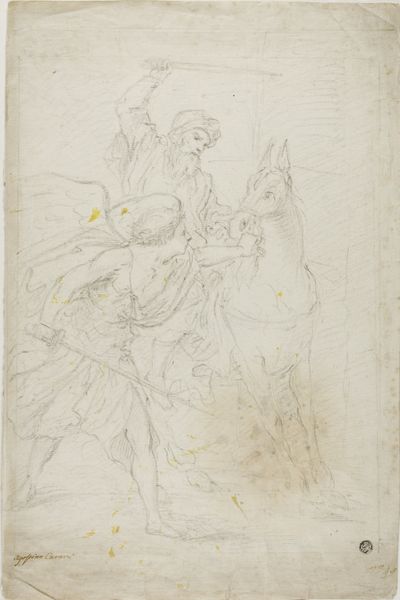
drawing, ink
#
drawing
#
narrative-art
#
pen sketch
#
mannerism
#
figuration
#
ink
Dimensions: height 304 mm, width 212 mm
Copyright: Rijks Museum: Open Domain
Curator: Allow me to introduce a fascinating pen and ink drawing currently residing in the Rijksmuseum: "Soldaat tussen H. Michaël en de duivel" created by Dirck Pietersz. Crabeth between 1550 and 1574. Editor: It’s striking, isn't it? Chaotic, even. There's a tension evident in the linework itself. The figures are almost bursting out of the composition. Curator: Indeed. The dynamic arrangement of figures and the use of swirling lines are certainly characteristic of Mannerism. We have a soldier caught between Saint Michael, brandishing a rather hefty sword, and a rather unsettling devil. Above, God looks down upon the scene. It is an interesting narrative on good and evil in society. Editor: Interesting how the soldier is positioned centrally, he looks concerned as if conflicted. This work feels very much of its time. The very depiction of power – both divine and demonic – plays out upon the figure of the everyday man in armor. Curator: Precisely! Consider the historical context, the social pressures and upheavals of the 16th century, specifically the rise of Protestantism. Imagery depicting good versus evil became increasingly prominent, both for Catholic and Protestant patrons, and pieces like this showcase a direct visualisation of those power structures at play. Editor: You can feel that tension here. The loose lines, particularly in rendering the cloudscape and the figures give a sense of turmoil that reflects uncertainty about power. Do you see, perhaps, an invitation for viewers to align themselves with a particular power or perspective? Curator: Certainly, but also consider that this may have been a preliminary drawing for a stained glass window; the composition lends itself well to such a medium. But also this suggests its function could have been didactic and propaganda to spread Catholicism and its principles. Editor: Ah, I can see that. The overall composition and its individual components could have worked together effectively as an immersive and educational visual experience. I also wonder whether it could even suggest how the artist personally negotiated those political and social pressures too. Curator: Yes, it provides a space for questioning how the social landscape, stained with historical tension, could bleed into the more formal composition. Editor: Looking at Crabeth’s work offers much more than just witnessing a singular art object but also is viewing complex visual arguments of history!
Comments
No comments
Be the first to comment and join the conversation on the ultimate creative platform.
